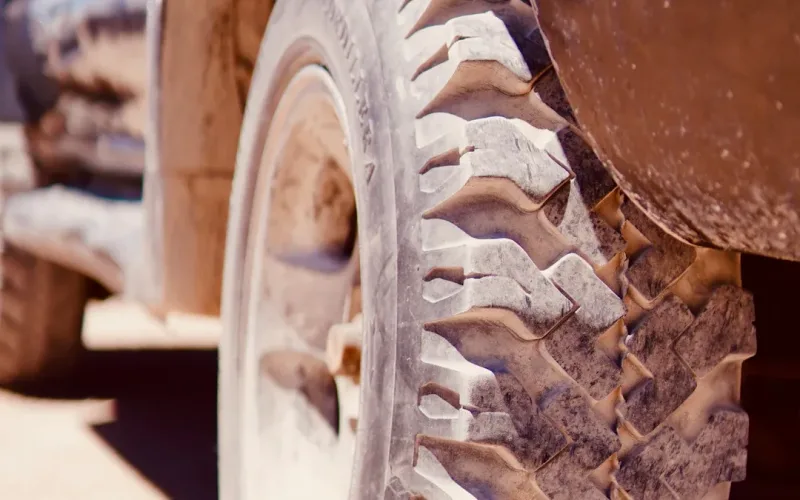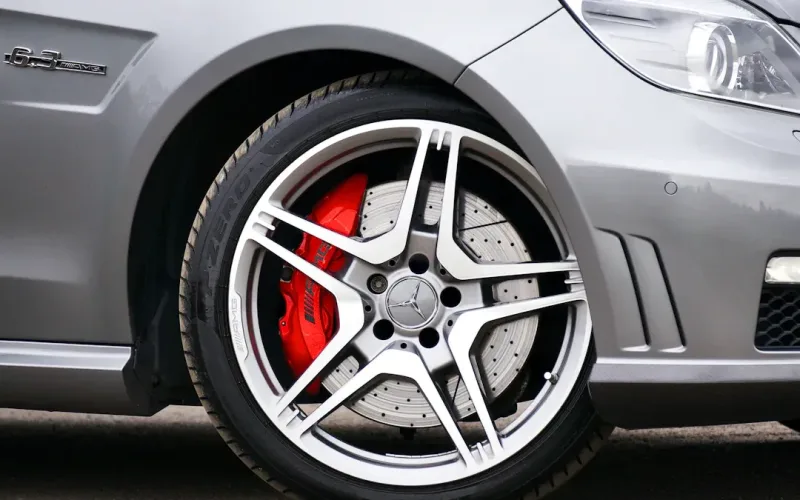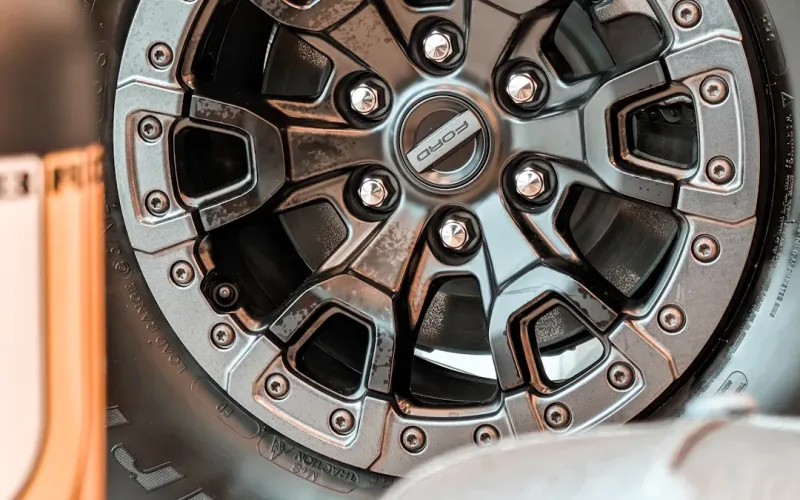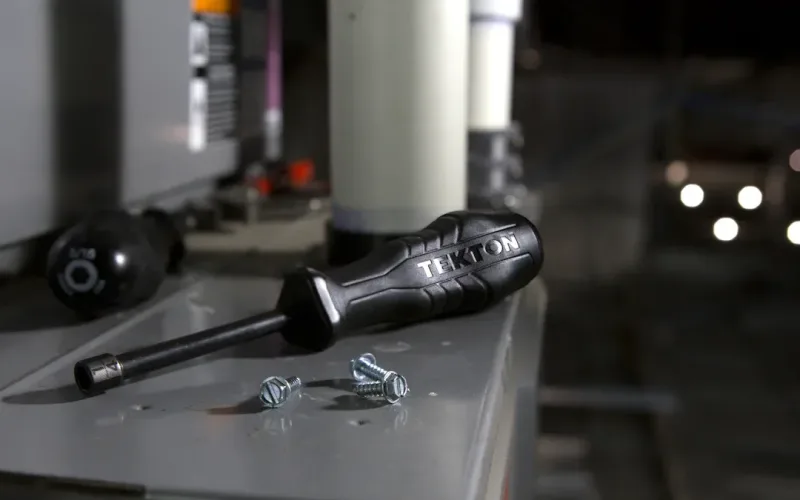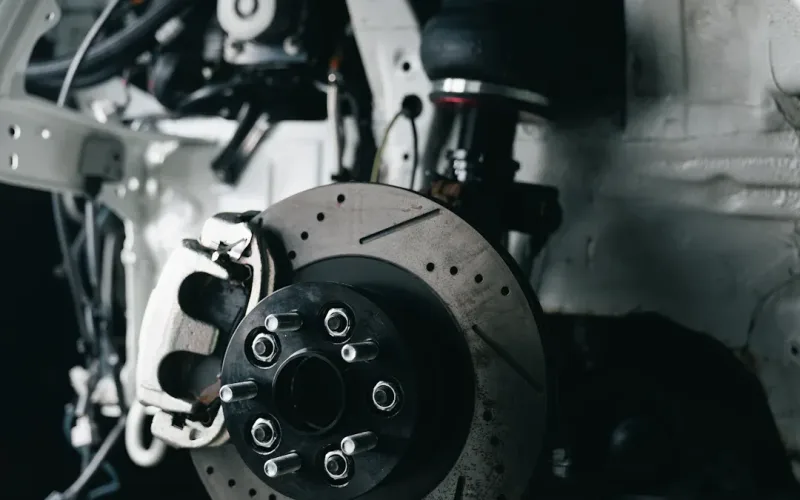

admin1
May 4, 2025
Tire Balancer Wheel Weights: Find Your Best Fit
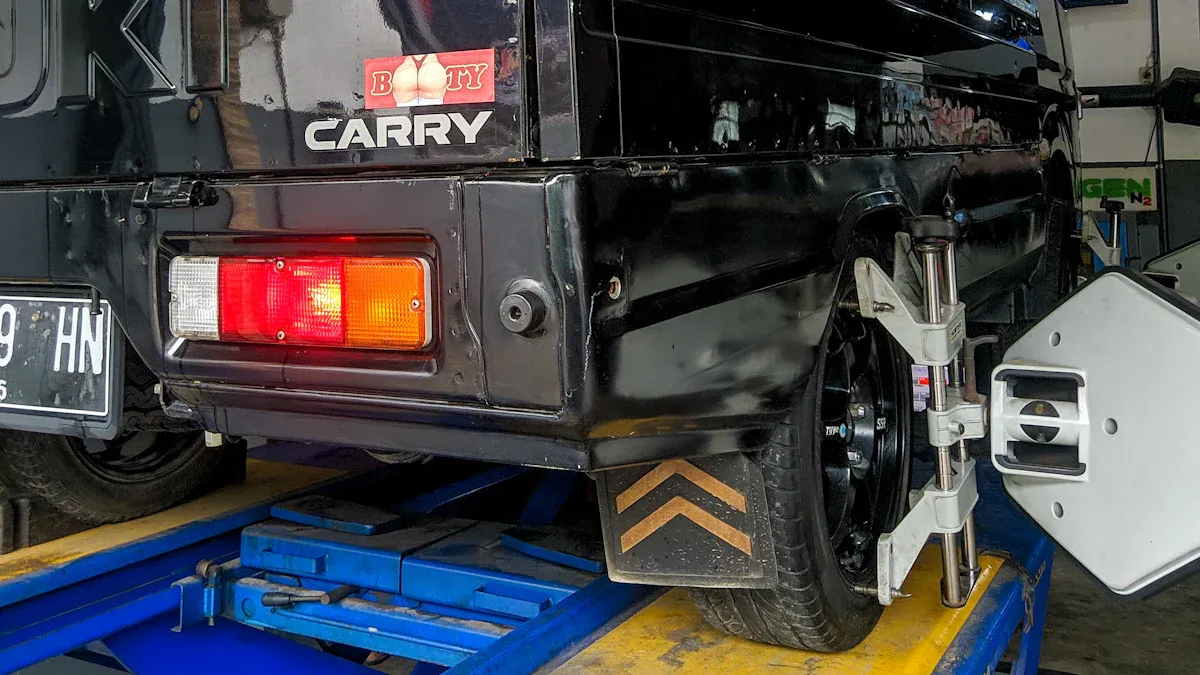
Choosing the right tire balancer wheel weights plays a vital role in maintaining your vehicle’s performance and safety. Proper weights ensure even weight distribution, reducing vibrations and improving driving comfort. With the growing demand for smoother rides, drivers now prioritize balanced tires more than ever. This trend is further fueled by advancements in automatic wheel balancing systems, which use precision sensors to detect imbalances. As vehicle ownership rises globally, the need for high-quality wheel weights continues to grow, with the market expected to expand at a steady rate of 6.4% annually. By selecting suitable weights, you ensure optimal balance and a better driving experience.
Types of Tire Balancer Wheel Weights

Understanding the types of wheel weights is essential for achieving proper tire balance. Each type offers unique benefits and is suited for specific applications. Let’s explore the most common options.
Clip-On Wheel Weights
Clip-on weights are a popular choice for tire balancing due to their simplicity and efficiency. These weights attach directly to the wheel rim using a metal clip, ensuring a secure fit. Their ease of installation makes them ideal for technicians who need quick solutions.
Tip: Clip-on weights dominate the market, holding over 60% of the share. Their adaptability and cost-effectiveness make them a preferred option for many drivers.
| Type of Weight | Market Share | Key Features |
|---|---|---|
| Clip-on weights | Over 60% | Ease of application, reusability, cost-effectiveness |
| Adhesive weights | Smaller share | Precise application, permanent fix, limited reusability |
While clip-on weights excel in reusability, they are best suited for steel rims. For alloy wheels, adhesive weights may be a better fit.
Adhesive (Stick-On) Wheel Weights
Adhesive wheel weights offer a sleek and precise solution for tire balancing. These weights stick directly to the inner surface of the wheel, making them ideal for flangeless alloy rims. Their discreet placement enhances aesthetics, especially for modern vehicles.
- Enhanced Adhesion: Advanced treatments, like Aculon® primers, improve the bond strength of adhesive weights by up to 81%, ensuring durability even under challenging road conditions.
- Manufacturing Efficiency: Adhesive weights require fewer stock-keeping units (SKUs), reducing production costs.
- Consumer Appeal: Many drivers prefer adhesive weights for their hidden placement, which maintains the clean look of alloy wheels.
However, adhesive weights demand precise application. Improper placement can lead to peeling or vibrations, which may cause customer dissatisfaction. Technicians must carefully position these weights to ensure optimal performance.
Steel, Lead, and Zinc Wheel Weights
The material of wheel weights significantly impacts their performance, durability, and environmental footprint. Steel, lead, and zinc are the most common materials used in manufacturing wheel weights.
- Steel Wheel Weights: Steel weights are highly accurate, as they are formed from solid pieces without porosity issues. They are environmentally friendly, recyclable, and resistant to corrosion due to special coatings. Steel is also cost-effective, with stable pricing compared to lead and zinc.
- Lead Wheel Weights: Lead weights have been widely used for decades due to their density and malleability. However, environmental regulations have restricted their use in many regions.
- Zinc Wheel Weights: Zinc offers a lightweight alternative but is less accurate due to porosity. It is also considered a secondary water contaminant, making it less eco-friendly than steel.
Note: Steel weights outperform zinc and lead in durability and environmental impact. Their corrosion resistance and recyclability make them a sustainable choice for tire balancing.
Choosing the right material depends on your priorities. Steel is ideal for long-term use and environmental sustainability, while zinc and lead may suit specific applications where cost or weight is a concern.
Universal vs. Vehicle-Specific Wheel Weights
When choosing wheel weights for your tire balancer, you’ll encounter two main options: universal and vehicle-specific weights. Each type has unique advantages, and understanding their differences can help you make the right choice for your needs.
Universal wheel weights are designed to fit a wide range of vehicles. These weights offer flexibility and convenience, making them a popular choice for workshops that handle various car models. For example, adhesive weights are universally compatible and work well with different wheel types. Their discreet placement behind the spokes ensures a clean and polished look. Clip-on weights, on the other hand, are practical for steel rims and provide quick installation. However, they may not be ideal for alloy wheels due to the risk of scratching.
Vehicle-specific wheel weights, in contrast, are tailored to fit particular makes and models. These weights ensure a precise fit, which can enhance performance and reduce the risk of imbalance. For instance, some manufacturers design clip-on weights specifically for alloy wheels, minimizing the chance of damage while maintaining a secure attachment. Vehicle-specific weights are often recommended for high-performance or luxury vehicles where precision is critical.
Here’s a quick comparison to help you understand the compatibility and performance benefits of each type:
| Type of Weight | Compatibility | Performance Benefits |
|---|---|---|
| Adhesive Weights | Universal compatibility | Suitable for various wheel types, discreet placement behind spokes for a cleaner look. |
| Clip-on Weights | Practical for steel rims | Quick installation, ideal for standard vehicles but may scratch alloy wheels. |
When deciding between universal and vehicle-specific wheel weights, consider your vehicle type and usage. Universal weights are cost-effective and versatile, making them ideal for general use. Vehicle-specific weights, however, provide a tailored solution for specialized needs. By selecting the right type, you can ensure optimal tire balance and a smoother driving experience.
Ensuring Compatibility with Your Tire Balancer
Matching Wheel Weights to Tire Balancer Models
Choosing the right wheel weights for your tire balancer ensures accurate balancing tire assemblies. Each tire balancer model has unique specifications, so you need to verify the compatibility of the weights you select. For example, some balancers work best with adhesive wheel weights, while others are optimized for clip-on weights. Always check the manufacturer’s guidelines for your balancer to determine the recommended weight type and size.
You should also consider the fitment of the wheel weights. Improperly sized weights can lead to inaccurate balance, causing vibrations or uneven tire wear. Many modern tire balancers include calibration settings that allow you to fine-tune the weight placement. Use these features to ensure the weights align perfectly with the wheel’s design.
Manual vs. Automatic Tire Balancers
The type of tire balancer you use—manual or automatic—affects the kind of wheel weights you need. Manual balancers require you to measure and place the weights yourself. This process demands precision and experience, as even a slight miscalculation can disrupt the balance. Clip-on weights are often preferred for manual balancers due to their ease of application.
Automatic balancers, on the other hand, use advanced sensors to detect imbalances and recommend the exact weight and placement. These machines often work seamlessly with adhesive wheel weights, which provide a precise and permanent fix. If you use an automatic balancer, ensure the weights you choose are compatible with its software and calibration settings.
OEM Recommendations for Tire Balancer Wheel Weights
Original Equipment Manufacturer (OEM) recommendations are a reliable guide when selecting tire balancer wheel weights. OEMs design their vehicles with specific weight types and materials in mind. Following these guidelines ensures optimal performance and prevents damage to your wheels.
For instance, some OEMs recommend steel weights for their durability and corrosion resistance. Others may suggest zinc weights for their lightweight properties. Always consult your vehicle’s manual or contact the manufacturer to confirm the recommended weights. This step guarantees proper fitment and enhances the longevity of your tire and wheel assembly.
Tip: Adhering to OEM recommendations not only improves balance but also helps maintain your vehicle’s warranty.
Key Factors to Consider When Choosing Wheel Weights

When selecting wheel weights, you must evaluate several factors to ensure proper balance and optimal performance. These factors include the material, size, precision, and resistance to environmental conditions. Let’s explore each in detail.
Material: Steel, Lead, Zinc, or Plastic
The material of wheel weights plays a critical role in their performance, durability, and environmental impact. Each material offers unique benefits, and your choice should align with your vehicle’s needs and driving conditions.
- Steel: Steel wheel weights are highly durable and environmentally friendly. They resist corrosion when coated and are recyclable, making them a sustainable option. Steel also provides consistent weight distribution, ensuring accurate balance. However, uncoated steel may corrode in salty or wet conditions.
- Lead: Lead has been a traditional choice due to its density and malleability. It allows for smaller weights to achieve the same balance as larger alternatives. However, many regions have restricted lead use due to its environmental and health risks.
- Zinc: Zinc weights are lightweight and cost-effective. They are less dense than lead, so they require more material to achieve the same weight. Zinc is also prone to porosity, which can affect balance accuracy. Additionally, it is considered a secondary water contaminant, making it less eco-friendly.
- Plastic: Plastic weights are a newer option, often used in specific applications. They are lightweight and resistant to corrosion but may lack the durability of metal weights.
Tip: Steel weights are an excellent choice for long-term use due to their durability and recyclability. If you prioritize environmental sustainability, avoid lead and zinc weights.
Weight Size and Precision
The size and precision of wheel weights directly impact your vehicle’s balance and performance. Choosing the correct size ensures even weight distribution, reducing vibrations and improving tire longevity.
| Feature | Description |
|---|---|
| Quick and accurate measurements | Built-in sensors enable fast and precise measurements. |
| Rim Data and Weight Location Entry | Options for manual or automatic data entry for weight placement. |
| Calibration | Ensures accurate weight placement and addresses ‘weight chasing.’ |
| Static force elimination balancing | Reduces residual weight by prioritizing static balance correction. |
| Single-plane dynamic balancing software | Corrects static and couple forces with a single weight application. |
| Auto-adaptive compensation software | Adjusts correction weight based on wheel mass for efficiency. |
| Behind-the-spoke balancing | Conceals adhesive weights for a cleaner, more aesthetic appearance. |
Modern tire balancers, such as the DST30P, offer advanced features like dynamic and static balancing modes. These machines calculate the minimum weight needed for optimal balance, enhancing efficiency and precision. Always ensure your weights match the specifications of your tire balancer to achieve the best results.
Environmental Conditions and Corrosion Resistance
Environmental factors, such as weather and road conditions, can affect the performance and longevity of wheel weights. Corrosion resistance is especially important if you frequently drive in harsh environments.
- Coated Lead Weights: Since the 1980s, lead weights have been available with polymer coatings to protect aluminum wheels from corrosion. However, lead’s environmental risks have led to reduced usage.
- Non-Lead Weights: Modern non-lead weights, such as steel and zinc, often come with protective coatings for use on steel wheels. These coatings add to their cost but improve durability.
- Steel Weights: While steel is durable, it corrodes easily in the presence of salt. If you drive in snowy or coastal areas, choose coated steel weights to prevent rust.
- Plastic Weights: Plastic weights resist corrosion entirely, making them suitable for wet or salty conditions. However, they may not provide the same level of durability as metal weights.
Note: Always consider your local climate when choosing wheel weights. Coated steel or plastic weights are ideal for areas with high humidity or frequent snow.
By carefully evaluating these factors, you can select wheel weights that enhance your vehicle’s performance and withstand environmental challenges.
Vehicle Type and Usage
The type of vehicle you drive and how you use it play a major role in selecting the right tire balancer wheel weights. Different vehicles have unique requirements based on their size, weight, and purpose. Understanding these differences ensures you choose weights that enhance performance and safety.
1. Passenger Cars
Passenger cars, including sedans, hatchbacks, and compact SUVs, typically require lighter wheel weights. These vehicles prioritize smooth rides and fuel efficiency. For most passenger cars, adhesive wheel weights work well. They provide a clean look and precise balance, especially for alloy wheels.
Tip: If you drive a passenger car, look for steel adhesive weights. They are durable, eco-friendly, and resistant to corrosion.
2. Trucks and SUVs
Trucks and larger SUVs demand heavier and more robust wheel weights. These vehicles often carry heavy loads or tow trailers, which puts extra stress on the tires. Clip-on weights are a popular choice for trucks with steel rims. They offer a secure fit and can handle the added weight and pressure.
For SUVs with alloy wheels, adhesive weights are a better option. They ensure proper balance without damaging the rims. Always choose weights that match the vehicle’s load capacity to avoid imbalance or premature wear.
3. High-Performance and Luxury Vehicles
High-performance and luxury vehicles require precise balancing to maintain their superior handling and ride quality. These vehicles often use low-profile tires and alloy wheels, which benefit from adhesive weights. Vehicle-specific weights designed for luxury brands ensure a perfect fit and optimal performance.
Note: For high-performance cars, always follow the manufacturer’s recommendations. Using the wrong type of weight can affect the vehicle’s handling and void the warranty.
4. Commercial and Heavy-Duty Vehicles
Commercial vehicles, such as delivery vans, buses, and heavy-duty trucks, operate under demanding conditions. They require durable and heavy wheel weights to maintain balance under constant use. Steel clip-on weights are a reliable choice for these vehicles. They provide a strong grip and withstand the wear and tear of daily operations.
If you manage a fleet of commercial vehicles, consider investing in high-quality weights. Proper balancing reduces tire wear, improves fuel efficiency, and minimizes downtime.
5. Off-Road and Recreational Vehicles
Off-road vehicles, including ATVs and 4×4 trucks, face unique challenges. Uneven terrain and extreme conditions can cause imbalances. For these vehicles, choose weights that resist corrosion and stay secure during rough rides. Coated steel weights or plastic weights are excellent options for off-road use.
Tip: If you frequently drive in muddy or wet conditions, opt for coated weights. They prevent rust and maintain performance over time.
| Vehicle Type | Recommended Weight Type | Key Considerations |
|---|---|---|
| Passenger Cars | Adhesive (Steel) | Lightweight, discreet, corrosion-resistant |
| Trucks and SUVs | Clip-On (Steel) or Adhesive | Heavy-duty, secure fit, load capacity |
| High-Performance Vehicles | Adhesive (Vehicle-Specific) | Precision, brand-specific, aesthetic |
| Commercial Vehicles | Clip-On (Steel) | Durable, heavy-duty, cost-effective |
| Off-Road Vehicles | Coated Steel or Plastic | Corrosion-resistant, secure in rough terrain |
By considering your vehicle type and usage, you can select wheel weights that meet your specific needs. Properly balanced tires improve safety, extend tire life, and enhance your driving experience. Always prioritize quality and compatibility when making your choice.
Common Mistakes to Avoid with Wheel Weights
Using the Wrong Type of Weight for Your Tire Balancer
Choosing the wrong type of wheel weight can lead to weight imbalances, which affect tire performance and vehicle handling. Different balancers, such as static, dynamic, and road force balancers, require specific weight types. Static balancers work well for smaller shops and basic applications, while dynamic and road force balancers offer greater precision for high-performance vehicles. Selecting the correct weight type ensures even balance, reduces vibration, and extends tire life.
When choosing wheel weights, consider your tire balancer’s specifications and your vehicle’s needs. For example, stick-on weights are ideal for aftermarket and original equipment wheels, while clip-on weights suit steel rims. Manufacturers with strong reputations and positive reviews often provide reliable products that meet these requirements. Always verify compatibility to avoid unnecessary adjustments or additional weight placement.
Ignoring Proper Weight Placement
Improper placement of wheel weights disrupts tire balance and compromises safety. Even slight miscalculations can result in uneven weight distribution, leading to vibration and reduced tire longevity. Using tools like balancers with laser pointers or alignment markers helps ensure accurate placement. For wide wheels, where weight planes are closer together, precise positioning becomes even more critical.
Stick-on weights, commonly used for alloy wheels, must be applied correctly inside the wheel. Placing them at an angle or in the wrong location complicates the balancing process. This can cause the balancer to register inaccuracies, requiring additional adjustments. Proper placement not only prevents these issues but also enhances the overall driving experience.
Overlooking Environmental Regulations (e.g., Lead Restrictions)
Environmental regulations play a significant role in wheel weight selection. Many regions have restricted the use of lead weights due to their harmful impact on health and the environment. Ignoring these restrictions can result in fines or penalties. Steel and zinc weights offer eco-friendly alternatives, with steel being the most durable and recyclable option.
When selecting wheel weights, prioritize materials that comply with local regulations. Coated steel weights resist corrosion and meet environmental standards, making them a sustainable choice. By adhering to these guidelines, you protect the environment while ensuring your vehicle remains compliant with legal requirements.
Failing to Regularly Inspect and Replace Wheel Weights
Neglecting regular inspections and replacements of wheel weights can lead to serious issues with tire balance and vehicle performance. Over time, wheel weights may loosen, corrode, or fall off due to road conditions, weather exposure, or wear and tear. These problems can cause uneven tire wear, vibrations, and reduced fuel efficiency.
You should inspect your wheel weights regularly to ensure they remain secure and functional. Monthly checks are ideal for identifying damaged or missing weights. During these inspections, look for signs of corrosion, cracks, or loose attachments. If you notice any issues, replace the weights immediately to maintain proper tire balance.
Tip: Tire balancers typically last 7 to 11 years. Monthly inspections help you catch problems early and extend the life of your equipment.
Replacement cycles for wheel weights depend on their condition and performance. Unlike other parts, weights are replaced based on functionality rather than just wear. For example, if a weight becomes dislodged or damaged, it should be replaced even if it appears relatively new. This proactive approach prevents further damage to your tires and ensures a smoother ride.
Here are some key maintenance practices to follow:
- Check for missing or loose weights during routine tire rotations.
- Inspect adhesive weights for peeling or weak bonds.
- Replace corroded weights to avoid imbalance and wheel damage.
By staying vigilant, you can avoid costly repairs and improve your vehicle’s safety. Regular maintenance not only extends the life of your tires but also enhances your driving experience. Make inspections and replacements a priority to keep your wheels in top condition.
Note: Consistent care of your wheel weights ensures optimal performance and reduces the risk of unexpected issues on the road.
Selecting the right tire balancer wheel weights ensures the proper balance of a customer’s tires. This improves vehicle performance and enhances safety. Always match the weights to your tire balancer and consider the material, size, and specific needs of your vehicle. Regular inspections help you identify issues early and maintain optimal tire balance. Avoid common mistakes, such as improper placement or ignoring manufacturer guidelines. By taking these steps, you can extend tire life, enjoy smoother rides, and ensure a safer driving experience.
FAQ
What are tire balancer wheel weights used for?
Tire balancer wheel weights correct uneven weight distribution in your tires. They ensure smooth rotation, reduce vibrations, and improve driving comfort. Properly balanced tires also extend tire life and enhance fuel efficiency, making them essential for vehicle performance and safety.
How do I know which type of wheel weight to choose?
Choose based on your wheel type and vehicle needs. Clip-on weights work well for steel rims, while adhesive weights suit alloy wheels. For heavy-duty or off-road vehicles, opt for durable coated steel weights. Always check your tire balancer’s compatibility and follow manufacturer recommendations.
Are lead wheel weights still allowed?
Many regions have banned lead wheel weights due to environmental concerns. Alternatives like steel and zinc are widely available and eco-friendly. Check local regulations before purchasing. Steel weights are a sustainable choice, offering durability and corrosion resistance without harming the environment.
How often should I inspect my wheel weights?
Inspect your wheel weights monthly or during routine tire rotations. Look for loose, corroded, or missing weights. Regular checks prevent imbalances, reduce tire wear, and ensure a smoother ride. Replace damaged weights immediately to maintain optimal tire performance.
Can I reuse wheel weights?
You can reuse clip-on weights if they remain undamaged and fit securely. Adhesive weights, however, lose their stickiness after removal and should not be reused. Always inspect reused weights for wear or corrosion to ensure they function properly.
